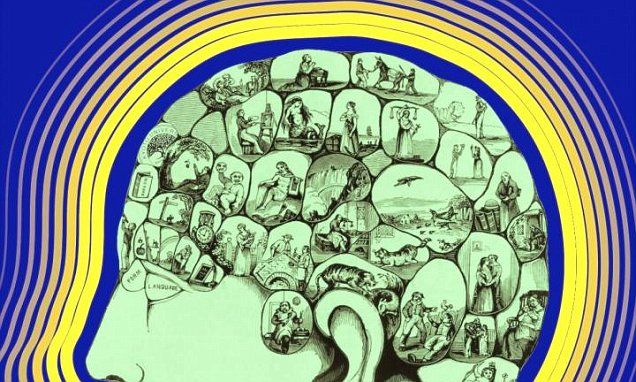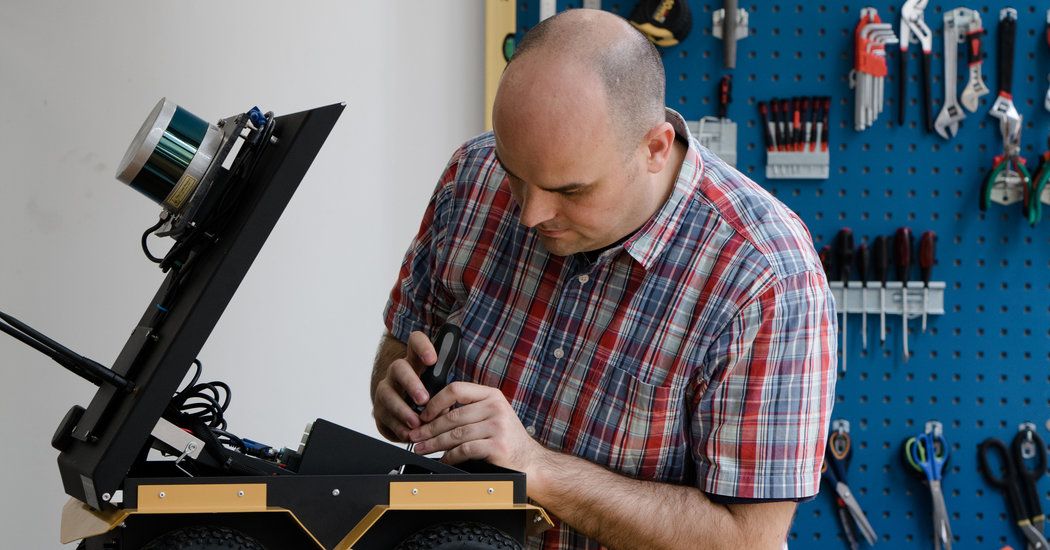Researchers from Kyoto University used signal patterns derived from a deep neural network to predict visual features from fMRI scans. This allowed their decoder to accurately identify objects.




A new article on #transhumanism and religion that’s worth reading:
Transhumanists are a group of people who prefer using science and technology to improve the human life. According to Zoltan Istvan, a declared atheists and key leader in the transhumanists movement, “Transhumanism is not a competition. It is simply a mode of being that embraces evolving the human being with science, reason and technology.”
The recent development in the transhumanism movement has seen the colonization of a few groups of religious people, who call themselves religious transhumanists. This group advocates using science, technology and religion to improve the human being. According to Zoltan, in the 21st Century, the formal religion will soon have no choice but to evolve and blend with the advancement in science and technology. Invention of churches in virtual reality, Robot pastors saving Artificial Intelligence through Christ’s redemption and even a Jesus Singularity are all soon going to be an important pillar in the religious movement and America’s future in general.
Although some religious conservatives are now rebuking Christian transhumanists and seeing them as pretenders, and renowned conservative writers like Wesley J. Smith are making jokes about it, the truth is that even the Bible advocates for the improvement of the human being. According to Zoltan, the only thing that lacks in the biblical narrative is that although it largely foreshadows the future, this future does not anticipate the merging of humans with machines, Transhumanist technologies, telepathy, ectogenesis, robotic hearts, brain implants, post-genderism, or artificial super intelligence.
As echoed by Zoltan, most transhumanists, including him, believe in reason. Accoring to them, living on faith, like most followers of Abrahamic religions and others do, is accepting to live vulnerably without the control of one’s life. Yet the society is quickly being transformed by science and technology, and Christians and other religious humans will soon be compelled to embrace this fact.
Manufacturing is dirty, dull, and outmoded. It’s a slow-moving industry stuck in the past as new technologies out of Silicon Valley threaten to upend it. Stereotypes are fun, and misleading.
Let’s not forget manufacturing is the industry that made the modern age.
While many were musing about robots in science fiction, manufacturers were putting them to practical use. As tech news headlines hyped up 3D printing, manufacturers had been prototyping with it for decades. And though information technology is the source of the latest revolution, manufacturing is the source of the source. No chip fab facilities, no chips.

A write-up on about neural lace and the future economy: https://altleft.host/zoltan-istvan-the-economy-of-the-future…ural-lace/ #transhumanism
Zoltan Istvan, a leading Transhuman, shows us that the economic system of Technocracy needs Transhuman citizens to make it work. This is not surprising because Transhumanism and Technocracy are two sides of the same coin. ⁃ TN Editor.
The battle for the “soul” of the global economy is underway. The next few decades will likely decide whether capitalism survives or is replaced with a techno-fuelled quasi-socialism where robots do most of the jobs while humans live off government support, likely a designated guaranteed or basic income.
Many experts believe wide-scale automation is inevitable. Even the world’s largest hedge fund, Bridgewater Associates, recently announced it’s building an AI to replace its managers, many of whom are highly educated and previously thought invulnerable to automation. Robots, it seems, will manage everything. Or will they?
A next-generation technology, likely to arrive in five to 10 years, is being credited as the saviour of capitalism. Known today as neural prosthetics, or neural lace, it’s essentially tech that reads your brainwaves. This tech promises to connect our brains to the cloud and AI to link us with machines using thought alone.

HONG KONG — Sören Schwertfeger finished his postdoctorate research on autonomous robots in Germany, and seemed set to go to Europe or the United States, where artificial intelligence was pioneered and established.
Instead, he went to China.
“You couldn’t have started a lab like mine elsewhere,” Mr. Schwertfeger said.

Peace and love on this Memorial Day to those who served and gave their lives for freedom. My interview a while back with Express is still right on.track about the future of military and how most human soldier casualties will be a thing of the past.
THERE will be no longer be human casualties of war from wealthy countries within 10 years as advanced militaries will begin sending MACHINES to warzones, an expert has claimed.


Most jobs that exist today might disappear within decades. As artificial intelligence outperforms humans in more and more tasks, it will replace humans in more and more jobs. Many new professions are likely to appear: virtual-world designers, for example. But such professions will probably require more creativity and flexibility, and it is unclear whether 40-year-old unemployed taxi drivers or insurance agents will be able to reinvent themselves as virtual-world designers (try to imagine a virtual world created by an insurance agent!). And even if the ex-insurance agent somehow makes the transition into a virtual-world designer, the pace of progress is such that within another decade he might have to reinvent himself yet again.
The crucial problem isn’t creating new jobs. The crucial problem is creating new jobs that humans perform better than algorithms. Consequently, by 2050 a new class of people might emerge – the useless class. People who are not just unemployed, but unemployable.
The same technology that renders humans useless might also make it feasible to feed and support the unemployable masses through some scheme of universal basic income. The real problem will then be to keep the masses occupied and content. People must engage in purposeful activities, or they go crazy. So what will the useless class do all day?
The Opportunity of Automation
“Ideally, what should be said to every child, repeatedly, throughout his or her school life is something like this: ‘You are in the process of being indoctrinated. We have not yet evolved a system of education that is not a system of indoctrination. We are sorry, but it is the best we can do. What you are being taught here is an amalgam of current prejudice and the choices of this particular culture. The slightest look at history will show how impermanent these must be. You are being taught by people who have been able to accommodate themselves to a regime of thought laid down by their predecessors. It is a self-perpetuating system. Those of you who are more robust and individual than others will be encouraged to leave and find ways of educating yourself — educating your own judgements. Those that stay must remember, always, and all the time, that they are being moulded and patterned to fit into the narrow and particular needs of this particular society.” – Dori Lessing in The Golden Notebook.
Automation will make most jobs obsolete. Rather than mourn the loss of the 9 to 5, we should see this as an opportunity to liberate humanity from the need to work for somebody else to survive. Coupled with universal basic income, it should be seen as a chance for every individual in society to more fully realize their potential.